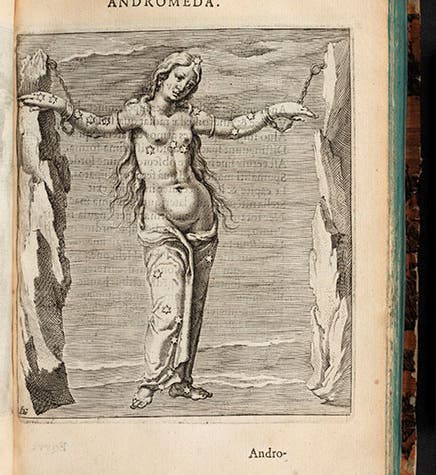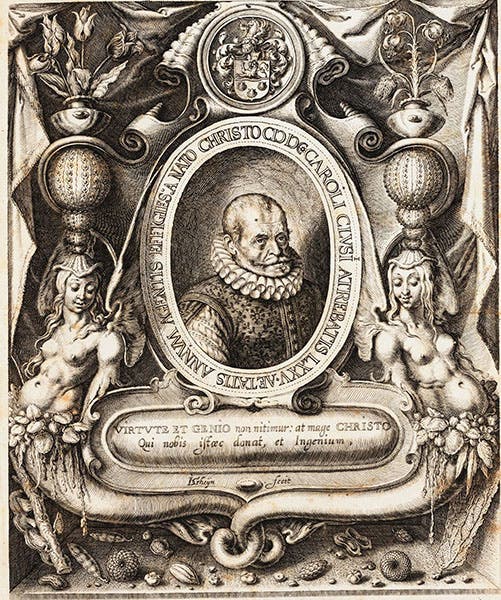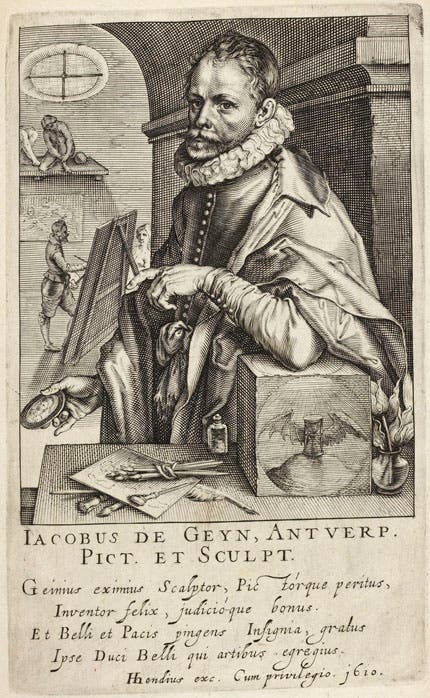Scientist of the Day - Jacques de Gheyn II
Jacques de Gheyn II, a Dutch artist, died Mar. 29, 1629, at the age of about 64. De Gheyn was at the forefront of a movement that is often called Dutch naturalism, manifested by a great interest in natural objects, especially small ones like insects and shellfish. Since de Gheyn did not illustrate natural history books, we have little of this aspect of de Gheyn's work in our collections.
But we do have quite a few de Gheyn engravings. There are about 40 of them in a book by Hugo Grotius, his Syntagma Arateorum (1600), which illustrates the constellations according to the ancient writer Aratus. De Gheyn was allowed little originality here, since he was instructed to copy the illustrations in a medieval manuscript of Aratus owned by Grotius. Nevertheless, the engravings are strong and attractive. We show one of them here, the constellation Andromeda (first image); you can see three more (and this one again) at our post on Grotius.
De Gheyn also engraved portraits, and we show three of those here, all of which appeared as either frontispieces or titlepage vignettes in books in our collection. The first is a portrait of Tycho Brahe, which appeared in Brahe’s Astronomiae instauratae mechanica (1602; second image, above). The second engraved portrait by de Gheyn depicts the Flemish naturalist Carolus Clusius and was included in his Rariorum plantarum historia (1601; third image, just above). The third shows the Dutch mathematician Ludolph van Ceulen, and this titlepage vignette appeared first in van Ceulen’s Vanden circkel (1596; fourth image, just below) and then again in the Latin edition, De circulo, in 1619. For this one, De Gheyn also got to engrave the value of pi to 20 decimals just below the portrait. You can see both impressions of the portrait at our post on van Ceulen.
The best-known science-themed engraving associated with de Gheyn depicts a famous historical event, when in 1602, Prince Maurice of Orange and 27 guests sailed from Scheveningen to Peten in two land yachts, or sand chariots, designed by the mathematician and engineer Simon Stevin.
However, it is not certain that this is a de Gheyn work. The British Museum engraving, which we show here (fifth image, just above), says it is “after” de Gheyn and assigns it a date of ca. 1615. However, the Rijksmuseum has a much larger engraving (45 inches across!) dated 1602, which seems to have been the source for the smaller engraving in the British Museum, and they attribute it to Willem Isaacszoon van Swanenburg. So there is some sorting out yet to be done here. Surely some art historian has written an article about the large engraving which I have not yet located. If and when I do find more definitive scholarship, and if the question marks are answered, I will come back and update this entry. Meanwhile, no matter what the outcome, we can still admire the sand chariots, and the portraits and constellation figures by de Gheyn.
The one portrait we have of Jacques de Gheyn is not a self-portrait, but was executed by another well-known Dutch engraver, Hendrik Hondiius, around 1610 (sixth image, just above)
Dr. William B. Ashworth, Jr., Consultant for the History of Science, Linda Hall Library and Associate Professor emeritus, Department of History, University of Missouri-Kansas City. Comments or corrections are welcome; please direct to ashworthw@umkc.edu.











